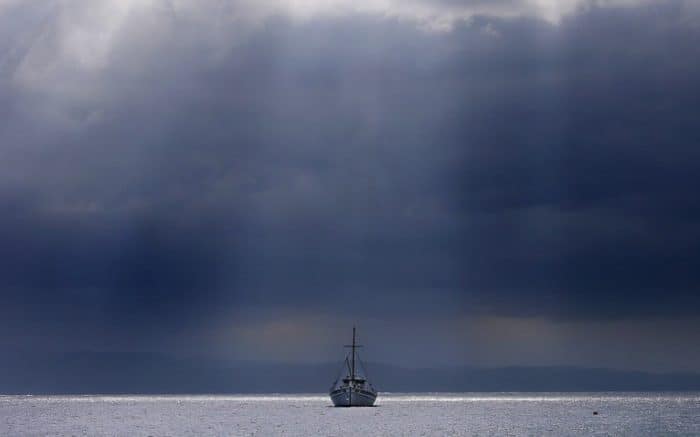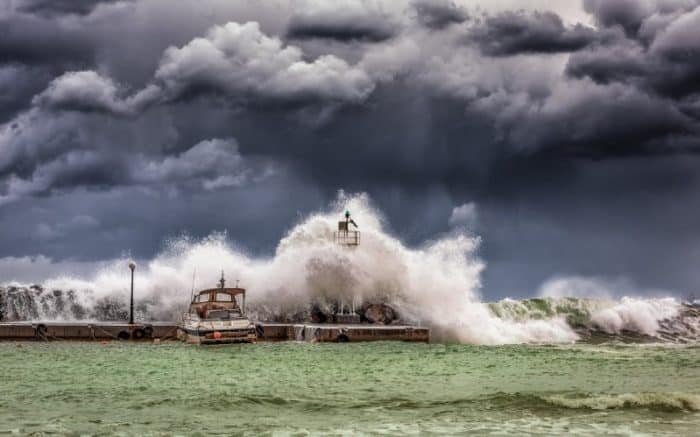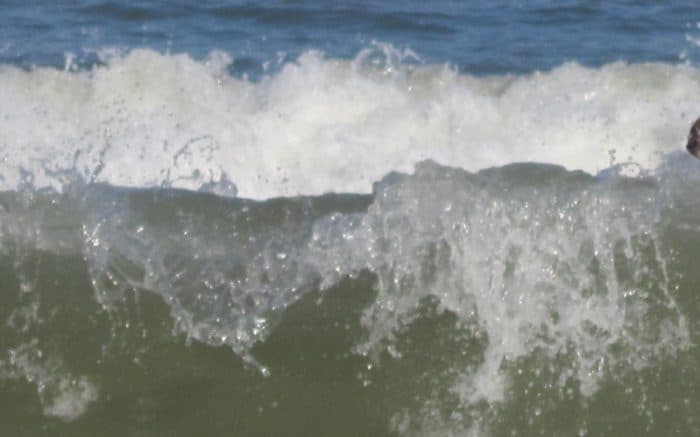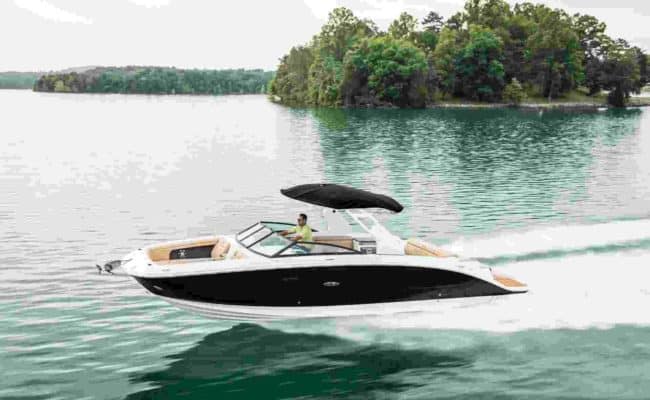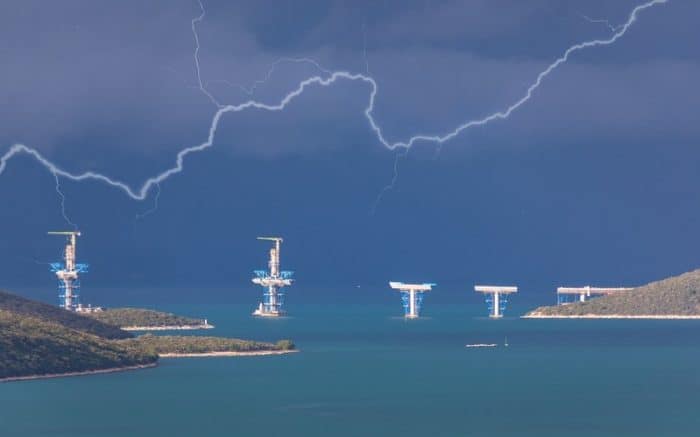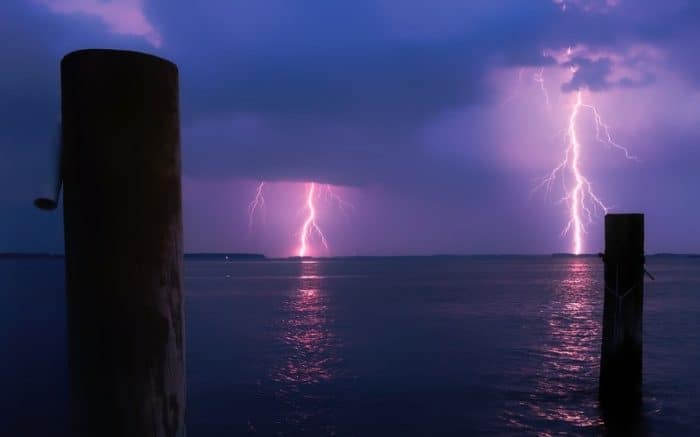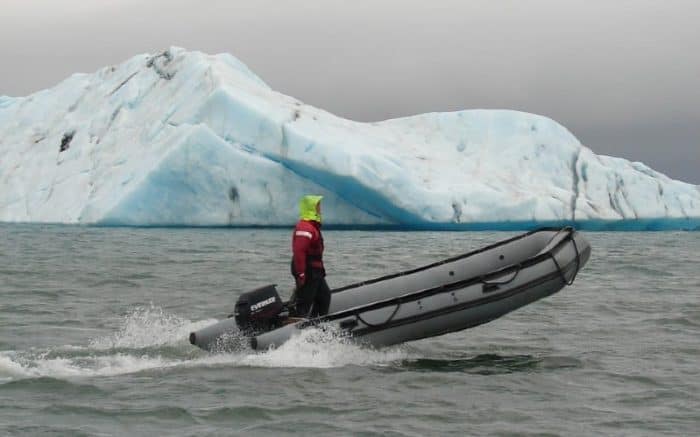Boating in Heavy Weather
Handling a small boat in a storm doesn’t have to be stressful. If you have kept a proper lookout, developed a “weather eye” and monitored the weather on your VHF radio, you should have plenty of time to get prepared. Obviously, the best way to handle rough weather is to get to shore immediately and avoid it completely. However, this may not be practical if you are on an extended cruise. In this case, you should prepare yourself, the vessel and your crew for what is to come.
As boats vary in design and size, and weather conditions vary in severity, so does the laundry list of precautionary items that need to be performed. The following list was accumulated from various resources and from input from those who have experience on the water when the weather turns for the worse. Thanks to those who contributed. For novice boaters we have defined some of the more unfamiliar terms such as jack line, sea anchor and drogue below.
What Every Skipper Should Know
- Meet with the crew to explain the situation and reassure them. Make sure that they know what to do, and what not to do, when the extreme weather arrives. Explain such things as keeping low in the boat, not moving around excessively and not going out on deck unless necessary. Give them all an assignment to keep them occupied and keep their minds off the situation.
- Determine position of storm, wind direction, speed and estimate time to your location.
- Secure all hatches; close all ports and windows. (Keep the water on the outside.)
- Pump bilges dry and repeat as required. This helps eliminate “free water effect.” (Sloshing of water in the bilge as the boat rolls which can effect stability.)
- Secure all loose gear above decks and below. Put away small items and lash down larger ones. Anything you want to have when the storm passes must be secured.
- Break out PFD’s and foul weather gear and exercise your authority as skipper by requiring them to be worn by everyone on board. Do this before the weather gets bad, don’t wait too long.
- Ready emergency equipment that you may need such as hand pumps, bailers, first aid kit, sound signaling device, etc.
- Get a good fix of your position and plot it on your chart. Make note of the time, your heading and speed.
- Make plans to alter course to sheltered waters if possible.
- Continue to monitor channel 16 on your VHF radio for updates to severe forecasts.
- For extremely severe weather, break out your abandon ship procedures and review them.
- Make sure the life raft is ready to be deployed.
- Make sure emergency food and water are in the life raft.
- Rig jack lines (see below for definitions) and/or life lines and require anyone who must go on deck to wear a safety harness.
- Make ready your sea anchor or drogue if needed.
- Turn on navigation lights.
- Keep away from metal objects.
- Change to a full fuel tank if possible.
- Keep a sharp lookout for floating debris and other boats.
- If you have a choice, do not operate the boat from the flybridge.
Prevent getting caught in heavy weather by developing a “weather eye,” listening to your radio, and heading for shore before it becomes an emergency.
Jack Lines – lines rigged along the outboard decks running from the bow aft. This allows you to attach the tether from your safety harness and move forward and back at will.
Life Lines – usually vinyl or plastic covered wire rope at the sides of the boat’s deck to keep the crew from falling overboard.
Safety Harness – a nylon web harness worn in rough seas or heavy weather. It has a tether with a clip. The clip is attached to the jack lines or lifelines so that if you are washed overboard in a storm you are still attached to the boat.
Sea Anchor – A floating canvas cone, held open by wire rings, with an opening in the smaller end, and a rope bridle at the larger end attached to a line leading to the bow of the boat. It is used in storm conditions to (a) keep the bow of the boat into the wind, and (b) slow the downwind drift of the boat.
Drogue – Any device steamed astern to check a boat’s speed and/or to help keep the stern perpendicular to the waves in a following sea.
Boat Handling Under Adverse Conditions
Some of the most challenging conditions you may encounter as a skipper are the adverse conditions of “Heavy Weather.” The size of your boat does not have much to do with its seaworthiness. How it will handle adverse conditions is more or less built in during the design and construction. You should never use your boat for anything other than for what it was designed and its intended use. Don’t venture into waters or weather conditions which are beyond your boat’s design capabilities.
What may seem heavy weather to an inexperienced boater may not bother a seasoned and weather-wise skipper at all. The body of water on which you operate has a lot to do with how severe the conditions may get. While operating on deep and large bodies of water, wave action tends to build more slowly than on large waters that are more shallow. In deep waters, wind action may only cause moderate seas with slow, rolling swells, while in shallower waters that same wind force may make steep, breaking seas.
Know Your Boat
Handling your boat in heavy weather is as individual as the skipper himself. No two boats react exactly the same in the same sea conditions. Each hull design reacts differently to the sea variables–and even two boats with the same design may act differently depending on their load and trim. Every skipper must learn the idiosyncrasies of his own boat and know how it will react as conditions change.
Meeting Head Seas
In moderate seas you should be able to slow your speed in order to ride up and over the waves rather than driving the bow into them. You also don’t want to get to the top and the wave and fall off the back side burying the bow. If conditions get worse, slow down until you are making bare steerage way and hold your boat at an angle of 45° to the swells.
The more you reduce speed, the less strain will be put on the hull and superstructure. Continued pounding can pop out or break ports and windows. You really don’t want to see how much water can come in a 12″ porthole.
Running in the Trough
If your course dictates that you are running in the direction of the trough of waves (parallel to them) you must take extra caution. As your boat bounces up and down from trough to trough it may roll excessively and possibly dangerously.
In these conditions in a powerboat, it is best to change course and make a series of tacks, taking the wind and waves at a 45° angle, first broad on your bow and then broad on your quarter. This zig-zag course should leave your boat in the trough for only long enough to turn. You want to minimize the time that you are in the trough and broad side to the swell to prevent broaching.
Running Before the Sea
When the swells are coming from directly behind you, running before them can be difficult. Your boat’s stern can be swept up and pushed to one side or another. You want to make sure that you keep the stern perpendicular to the oncoming seas.
Another concern is when lifted up by heavy seas the boat tends to rush down the slope from the crest to the trough. Occasionally with the stern high, the propeller can come out of the water and race. The rudder also may lose contact with the water flow and be left useless. Again, the boat may yaw to one side and broach into the trough.
Another concern is sliding down the wave at a speed that buries the bow, and with the stern still being pushed up the possibility of pitchpoling exists. You might also want to try tacking before the seas, again taking the swells off one quarter and then the other. This is where you might consider a drogue. Towing a drogue helps slow your speed when running before the seas and can make controlling the stern in the proper position easier for the helmsman.
Heaving To
If conditions become so violent that you and your boat are taking too much punishment, you might consider heaving to. This maneuver, which varies by type of boat, is designed to keep the bow into or slightly off the wind and wave action.
In a power boat, forget your intended destination and bring the bow around into the wind and waves using just enough power to make bare steerage way while conserving fuel. If fuel becomes a concern you might consider deploying a sea anchor to fall back on to help keep the bow into wind and wave action with no power necessary. It also slows any drift that you may be making if a leeshore is a concern.
Always Use Caution
As we have already stated, your best bet is to avoid severe weather, but if you can’t you should be prepared. This is a subject that should be approached with as many sources of reference as possible. The information provided here should not be relied on solely and is meant to only give an overview of the topic. You should read books about heavy weather boat handling, attend USPS or USCG Auxiliary classes for heavy weather handling techniques, you should view videos on the subject, and you should practice the maneuvers in light to moderate seas. Remember, boating is meant to be fun but safety is serious and can mean the difference between life and death.
Categories: nauticalknowhow
